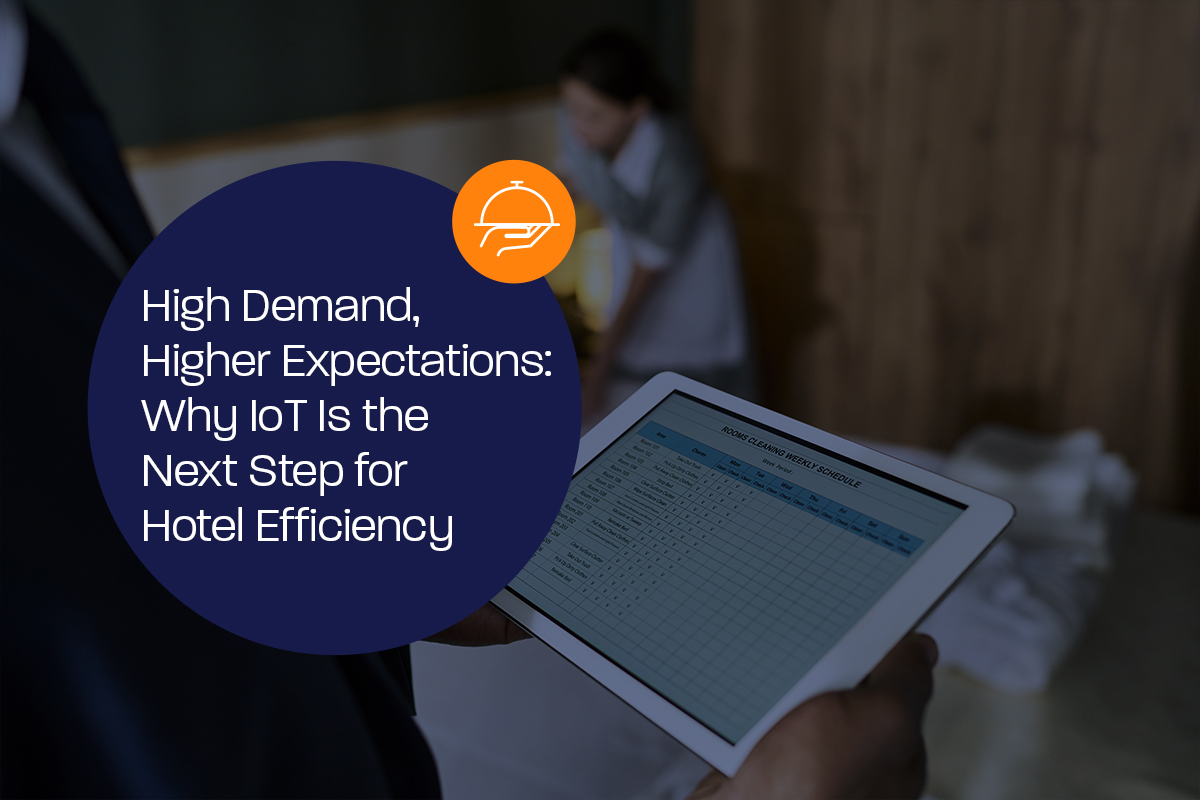While risk mitigation is vital for virtually every trade, the hospitality industry is particularly vulnerable to a myriad of risks. As such, it’s fundamental for hotel operators to safeguard operations, protect guests and staff, and ensure profitability by preserving their brand integrity.
This four-part blog series examines how the hospitality industry can use the Internet of Things (IoT) to connect people, processes, and systems that streamline and automate risk mitigation with intelligent, affordable technologies. The first installment of this series delves into IoT-backed pest control monitoring as a critical means of proactively mitigating the damaging effects of bedbugs and rodents to both a hotel’s property and brand reputation.
Bedbug Monitoring
In 2023, the United States pest control industry had an estimated market value of over $26 billion - a considerable increase from just over $14 billion in 2012. That said, when pests like rodents or bedbugs invade, hotels experience a litany of dire consequences that permeate every aspect of the business - ruining brand reputations, posing major health risks to guests and staff, sparking lawsuits, and dissolving funds. Bedbugs and rodents represent the most problematic pests in that they’re incredibly resilient, multiply rapidly, survive for days or months without food, and often go undetected until infestations are rampant.
Bedbugs are reportedly the most difficult pests to control once an outbreak has been determined, especially given that some types have evolved to resist pesticides and that it takes about seven weeks on average for an infestation to be discovered. Despite their small size, these pests have been shown to travel over 100 feet a night but tend to live within 8 feet of where people sleep. To discover the impact of bedbugs on a hotel’s bottom line, one study surveyed around 100 hoteliers nationwide and found that bedbugs are a common occurrence in hotels. In fact, hotels treated for bedbugs 7.1 times every five years, and according to another report, it costs US hoteliers $111,000 annually per location because of lost business, the need to replace soft goods, and provide treatment. Additionally, almost half of all hotels surveyed have been the subject of litigation, costing an average of $17,000 per incident – with the worst cases approaching nearly $200,000.
Hotels have various options and methods available for bedbug detection such as training housekeeping staff to look for them during their shifts or regularly scheduling pest control companies to visit and examine the property. These methods have limitations, however, related to labor and expenses by potentially overburdening staff and racking up costly service visits by pest professionals. IoT solutions are a far better option since they offer proactive, real-time detection capabilities paramount for detecting bedbugs as early as possible. With modern IoT solutions, hoteliers can combat bedbugs with strategic, discreet placement of wireless sensors underneath mattresses to deliver continuous, 24/7 monitoring, and real-time alerts for swift remediation to avoid widespread infestation, disruptions to hotel operations, and irreparable reputational harm.
Rodent Monitoring
Aside from posing a monumental nuisance, rodents can wreak havoc on a hotel in several ways. Since their teeth are constantly growing, they gnaw on anything available, from wiring to furniture and drywall, which can compromise a hotel’s structural integrity and cause substantial damage to property. In some instances, the gnawing of wires and cables can lead to electrical equipment failures and short circuits. What’s more, rodent infestations can directly affect a hotel’s key performance indicators (KPIs), hurting profitability and, ultimately, their bottom line. If discovered by guests, a rodent infestation will likely elicit negative reviews and complaints - disparaging a hotel's reputation which can lead to a decline in bookings. To combat the decrease in room demand, a hotel may need to lower room rates to attract guests, which drives down the Average Daily Rates (ADR). In turn, the Revenue per Available Room (RevPAR) is directly affected because of lower room rates and/or occupancy.
Rodent infestations have harrowing consequences that can affect operations, finances, brand, employees, and guests on a much deeper level. Known to transmit more than 35 illnesses according to the CDC, mice and rats have alarming reproduction rates. Mice can give birth to 300 babies or more in a year, and their pups can mate and reproduce as quickly as four weeks after their birth. Rats can produce more than a staggering 1,000 pups annually. What’s more, when widespread infestations occur, pest control initiatives like glue traps and deep cleaning initiatives simply aren’t enough, often failing to eliminate an active infestation.
That’s why, like bedbugs, early detection is the best means of avoiding rodent infestations. The strategic placement of smart traps with IoT-enabled monitoring helps managers effectively observe and achieve rodent control with new levels of automation and efficiency. Around-the-clock, remote monitoring provides continuous visibility for easy identification of traps that have been “activated” without the need to manually check each one. By allowing owners and operators to utilize a centralized application, users can track traps across multiple areas and properties.
One IoT Solution, Infinite Possibilities: Unlock Powerful Efficiencies in Hospitality
Maximize your investment value and ROI, drive cost savings, and future-proof your hotel’s ecosystem with a single IoT solution infrastructure that scales seamlessly for additional use cases as your needs evolve.
Up Next: Part 2 - Enable Proactive Leak Detection
Water leaks, like pests, often remain undetected until significant damage has occurred, causing serious repercussions for hotels. Our next segment, part two, illuminates the critical role of IoT in proactive leak detection.







